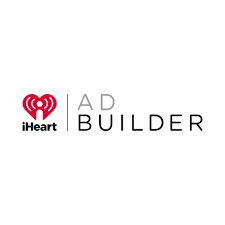
Recent years have seen targeted TV advertising become much more popular. It not only increases the reach of a campaign but it can also help brands grow their brand. But before targeted advertising became mainstream, it wasn't necessarily a good choice. A targeted commercial could look like a 30-second spot, but it was usually scheduled weeks in advance. A commercial was essentially mass market messaging, in reality.
Consumers can tailor their viewing experience by targeting TV ads. For example, they can select which ads they want to see during the commercial breaks. This is far more effective than just seeing the same ad repeatedly. However, it is not easy to reach the right audience by sending the right message.
Advertisers need to find a way that unites their approach to TV advertising. This involves combining data and technology to deliver precise targeting. There are two types of targeting: addressable TV (AT) and connected TV (CTV). CTV is most commonly used for targeted advertising. Connected television is a programmatic platform that allows marketers target viewers based upon their demographics, behavior, and other characteristics.

Companies can also benefit from new ways of viewing content. Streaming services such as Hulu and Netflix can help marketers enhance their branding strategies. They can also increase awareness of a product range that's only accessible online. These kinds of new viewing experiences could change the way that we see TV ads.
QR codes are another option available to marketers. These handy little gadgets allow you to browse a product, purchase a product and explore the company's history. Although QR codes were around for a while, their popularity has increased in recent years.
Cadent's Aperture Marketplace is an example. It allows advertisers to build audience segments using first and third-party data. While it may not be the most interesting feature, it's still an essential tool for marketers.
Another enticing form of targeted television is infomercials. These ads typically offer a premium or discount on a cross-sell or upsell product. The infomercial needs to be convincing and use the product's pace. An appealing, humorous commercial is also a great way for viewers to be attracted.

Advertisers need to think about their brand and the consumer in order to create TV ads that are convincing. A well-executed informational should also be capable of creating a need in viewers' minds. It will be easier to establish a relationship with the consumer if they can identify a need for it.
Using data to make better decisions about the right TV ad is the next step. Today's technology and data will allow advertisers to optimise their media campaigns to better meet their business goals.
It's evident that TV advertising will become more interactive as more people turn to online and streaming services. With more consumers watching over-the-top content and cutting the cord, marketers have to think creatively about how to engage their audiences.
FAQ
What is advertising's primary purpose?
Advertising is more than selling products. It's about building an emotional connection with your customers.
Advertising is about communicating your ideas and values to people who already care about what you have to say. It's about changing minds and attitudes. And it's about building relationships.
It's all about helping people feel good.
If you don't understand your customers' needs, you can't market to them.
You must first get to know your customer before you can start advertising projects.
You can then design ads that resonate with them.
What is branding exactly?
Branding is how you convey who you really are and what you believe in. It is how people remember your name.
Branding is about creating a memorable brand identity for your company. A brand is more than just a logo. It includes everything from your physical appearance and the voice of employees.
A strong brand makes customers feel more confident about buying from you. Customers feel confident in choosing your products to those of their competitors.
A good example of a well-branded company is Apple. Apple is a globally recognized brand because of its beautiful design, high-quality product lines, and friendly customer service.
Apple has been synonymous with technology since its inception. People think of Apple whenever they see a computer or smartphone.
It is a good idea to create a brand prior to starting a new company. This will give your business a face and personality.
How much does it cost to advertise on social media?
If you decide to go this route, you should know that social media advertising is not free. You will be charged monthly based on how much time you spend on each platform.
Facebook - $0.10 per 1,000 impressions
Twitter - $0.20 for 1,000 impressions (if tweeting)
If you send invitations, Linkedin: $0.30 per 1,000 impressions
Instagram - $0.50 for 1,000 impressions
Snapchat – $0.60 per 1,000 impressions ($0.40 for each user)
YouTube - $0.25 per 1,000 views
Tumblr - $0.15 per 1,000 impressions for text posts.
Pinterest - $0.05 per 1,000 impressions per month
Google + $0.15-$0.20 for 1,000,000 impressions
Tumblr - $0.15- $0.20 per 100,000 impressions
Vimeo - $0.20 to $0.25 per 10,000 impressions
Soundcloud - $0.20 to $0.0.25 per 1 Million Plays
StumbleUpon - $0.20 -$0.25 per 1 billion pageviews
Digg - $0.20 to $0.25 per 1000 diggs
Reddit - $0.20-$0.25 per 1000 comments
Wordpress – $0.20--$0.25 Per 500 Comments
Flickr - $0.20 -- $0.25 per 5,000 photo uploads
Advertising: What does it mean?
Advertising is an art. Advertising isn't just about selling products. It's about building emotional connections between brands and people.
Advertising is all about telling stories with images and communicating ideas.
It is important to communicate clearly and persuasively. And you need to tell a story that resonates with your target market.
Advertising is thus different from other forms, such public speaking, writing, and presentations.
You are building a brand identity when you run a successful advertising campaign.
This is how to be remembered. You are someone people remember.
What do you need to know about television advertising?
Television advertising has the potential to reach large audiences at once. It was also very costly. However, if you use it well, it can be incredibly powerful.
There are many different types of TV ads, but they all have certain common characteristics. It is important to make sure that your TV ad fits into the appropriate category. If you're running a product commercial, don't try to run a lifestyle commercial as a product commercial. Your message should remain consistent throughout the campaign.
Second, prime-time hours are the best times to air your ads. This is because TV viewers often relax while in front of the screen. They should be able to concentrate on what you are saying.
Don't assume that just because you have lots of money, you will achieve great results. The opposite may actually be true. According to University of California research, commercials airing during popular shows are less likely to be seen and sell more products than those which air during unpopular shows. If you spend a lot of money advertising on TV, make sure it's done right.
What is an Ad Campaign?
Advertising campaigns are a series or advertisements that promote a product. This could also include the entire production of these ads.
The Latin word for selling is "ad." Marcus Terentius Varro, 116-27 BC, was the first to use it. He used it as a verb that meant "to make a sales."
Advertising campaigns are most often done by large agencies or businesses. There may be many media types involved, including print and television as well as radio, TV, and internet.
Advertising campaigns typically last for several months and have specific goals. Campaigns can be targeted at increasing awareness or sales, for example.
How do I choose my target market?
Start with yourself, and the people closest to you. Do you not know where to start? Ask yourself "Whom do I want to reach?"
Ask yourself these questions. Who are the most influential people within my industry? What are their biggest challenges? What are their top talents? They hang out online.
Take a look back at how you started your company. What was your motivation for starting? What problem were you able to solve and how did this happen?
These answers will help to identify your ideal clients. You'll also learn more about what makes them tick and why they buy from you.
You can also look at your competitors' websites and social media pages to find clues about whom they cater to.
Once you have identified your target customers you will need to choose the channel to reach them. For example, if your company provides services to real estate agents, you might create an informational website targeting home buyers.
If you provide software to small businesses, you could develop a blog targeting those companies' owners.
You could also create a Facebook account for teens if you sell clothing. A Twitter account could be set up by restaurant owners to allow parents to search for places that are kid-friendly.
It is important to remember that there are many methods of getting your message across.
Statistics
- Worldwide spending on advertising in 2015 amounted to an estimated US$529.43 billion. (en.wikipedia.org)
- In 1919 it was 2.5 percent of gross domestic product (GDP) in the US, and it averaged 2.2 percent of GDP between then and at least 2007, though it may have declined dramatically since the Great Recession. (en.wikipedia.org)
- Advertising's projected distribution for 2017 was 40.4% on TV, 33.3% on digital, 9% on newspapers, 6.9% on magazines, 5.8% outdoor, and 4.3% on radio. (en.wikipedia.org)
- It's 100% reliant on your website traffic. (quicksprout.com)
External Links
How To
How to put ads on your website
Advertisements are an important part of any business. They allow you to reach potential customers and keep them coming back.
Advertising allows you to promote your products without spending any money.
Google Adsense allows you to display text or image ads on your blog, website, forum or other online content.
Google Adsense allows you to earn revenue from each click on ad links displayed on your site. It doesn't take any code to create your ads.
To get started, just sign up for a free account at www.google.com/adsense. Next, follow these steps.
-
Use the Ad Builder to create your ads. You can create different ads using the tool, including text, images and video ads.
-
After creating your ads, you need to upload them in your AdSense account. Click "Upload" in the left-hand navigation to do this.
-
Next, add keywords relevant to your product or services to ensure that your ads are displayed in search results relevant your niche.
-
Finally, copy and paste your ads into the appropriate areas of your website. Once you've completed all of this, your ads are automatically uploaded to the website.
-
Clicking on an advertisement will take visitors to another page of your website, where they can shop for your products and/or services.
-
Earnings are deposited into your AdSense account whenever someone clicks on one of your ads.
-
By clicking on the My Account tab at the top right of your AdSense dashboard, you can view reports that show the performance of your ads.
-
Your earnings can also be downloaded as a CSV.
-
If you wish to increase your earnings, make adjustments to your ads.
-
Finally, ads can be paused or deleted at any time.
-
If you have questions or concerns, feel free to contact us.